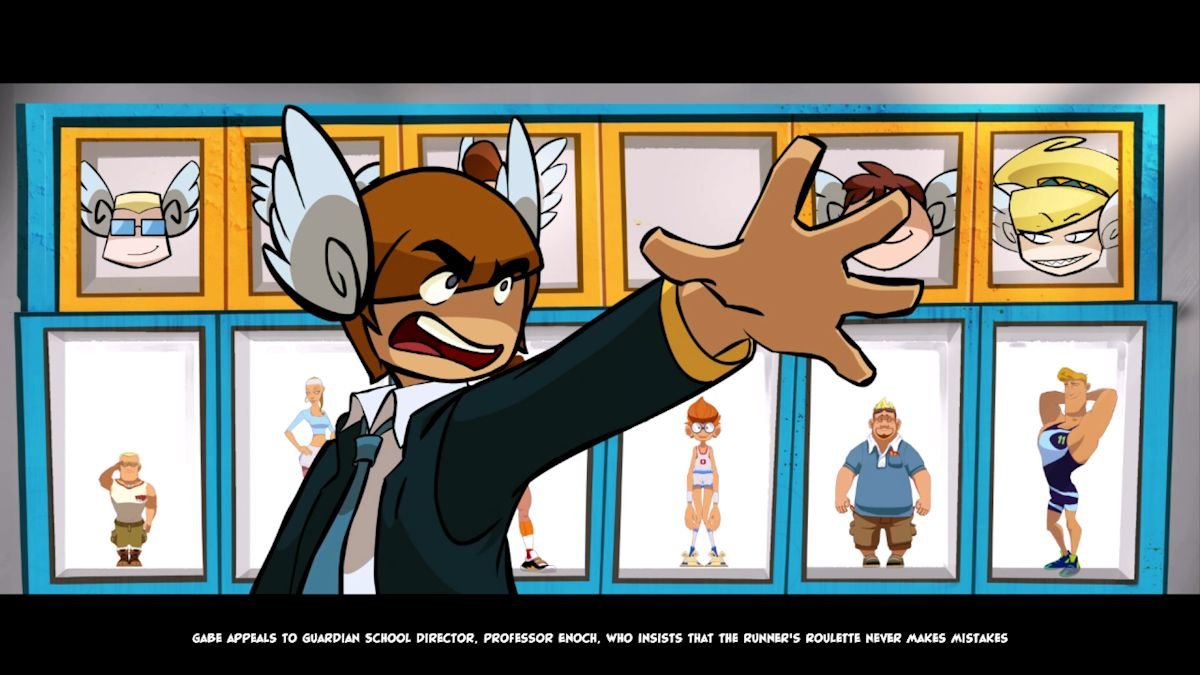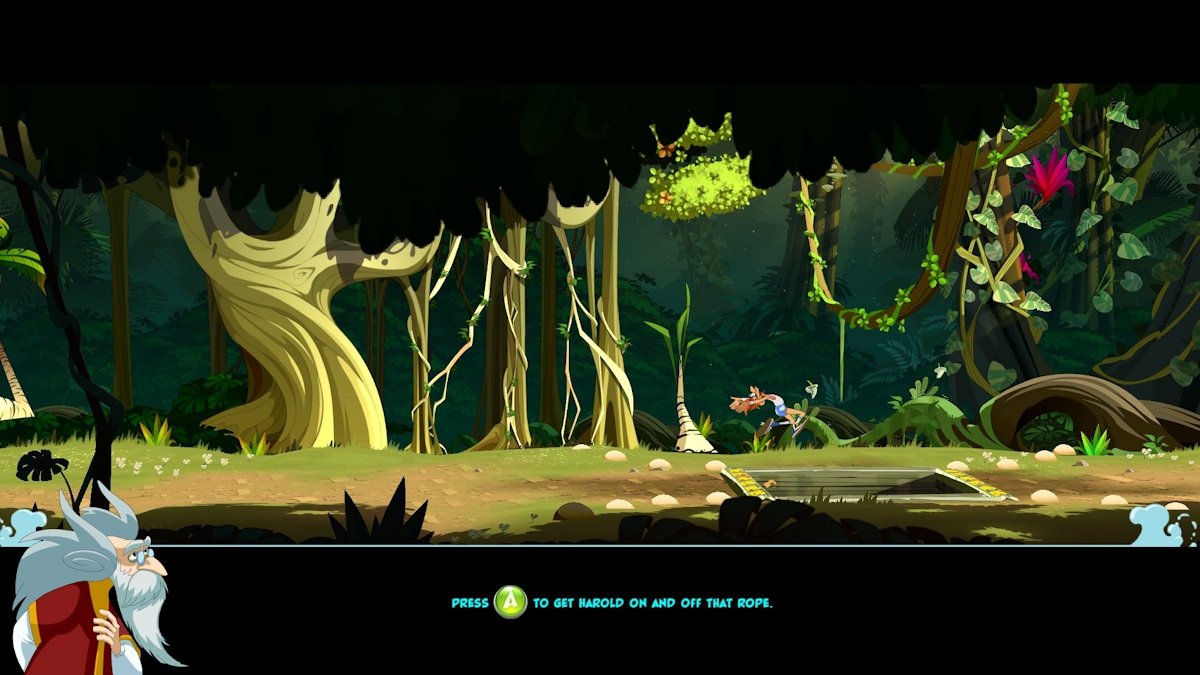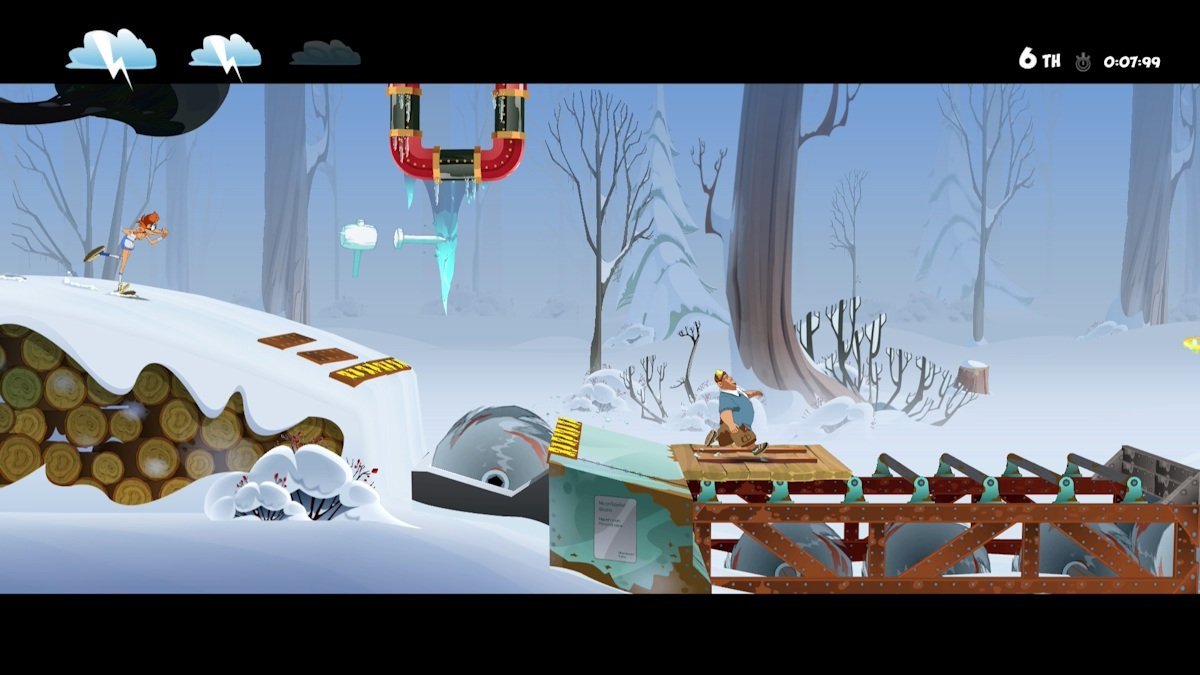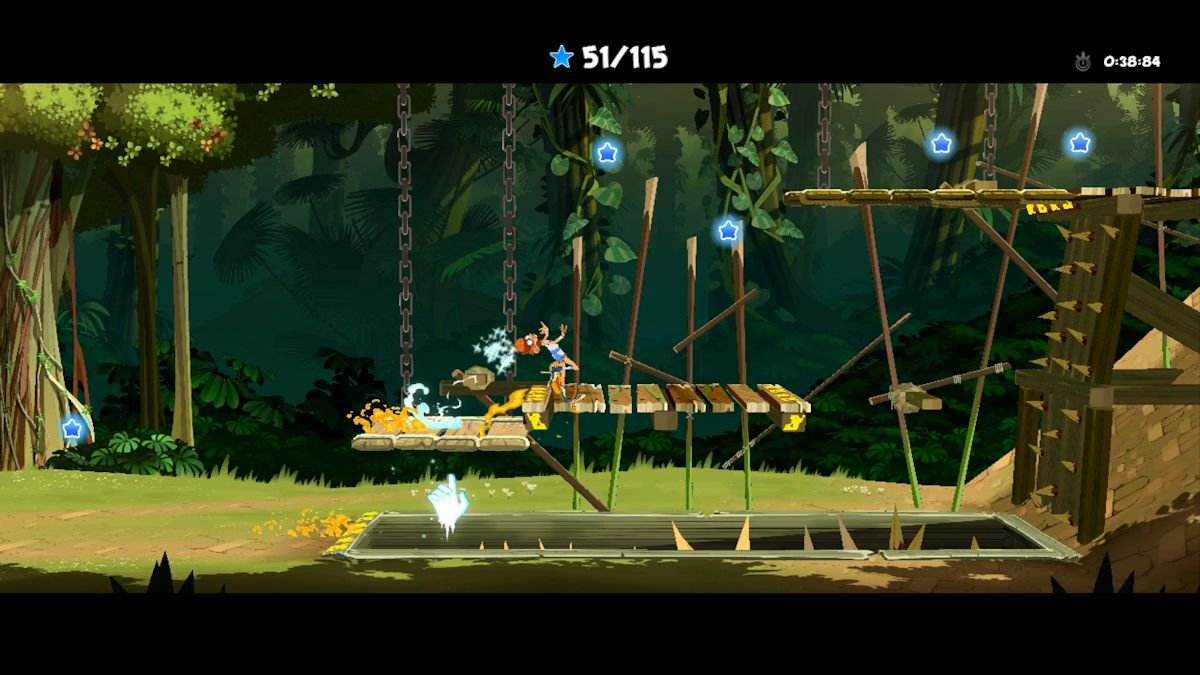Steam Spotlight: Play guardian angel in 'Harold' for Windows
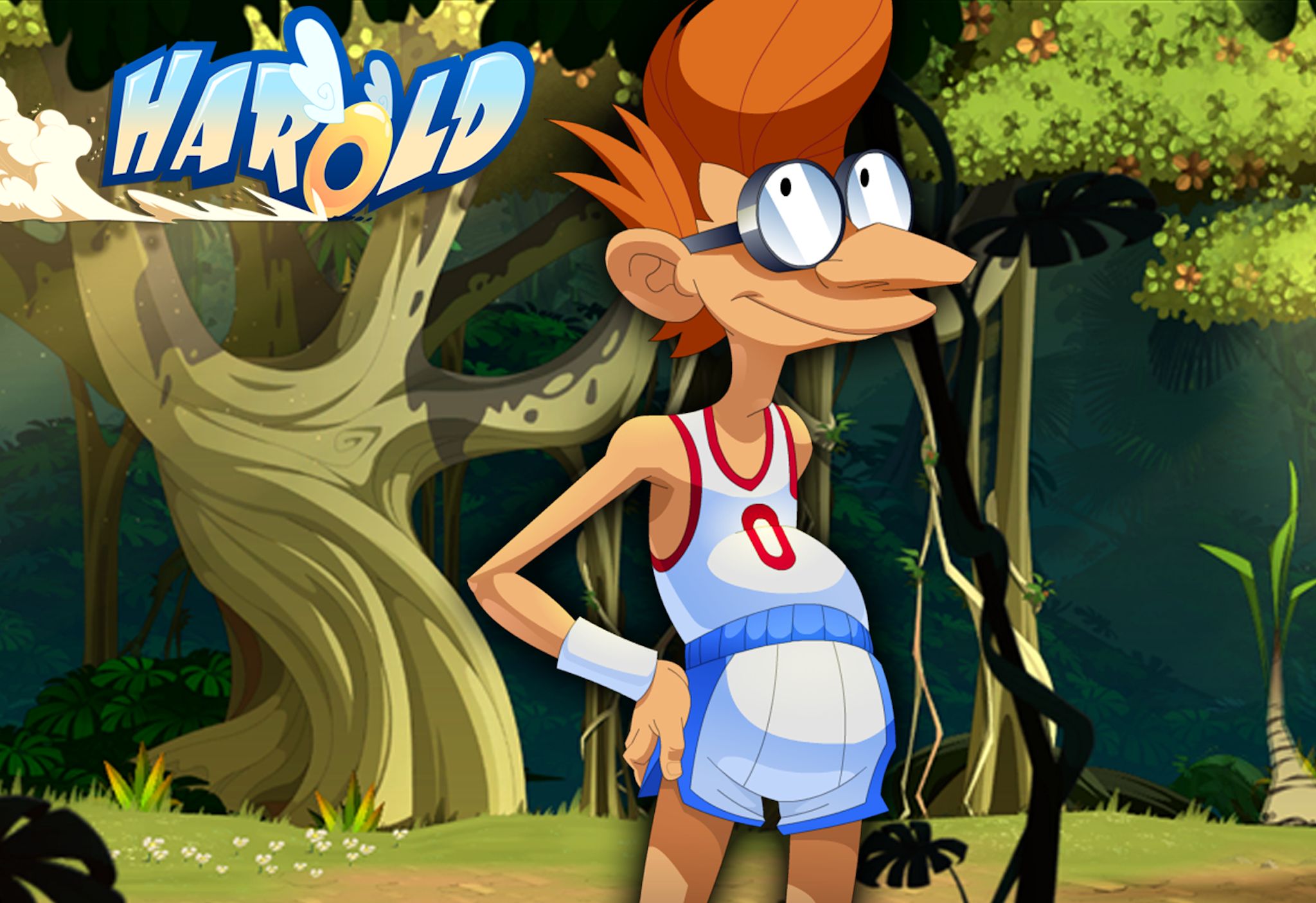
Welcome to the latest installment of our semi-weekly feature, Steam Spotlight! Here we will look at interesting games available on Steam, the popular digital distribution platform for Windows computers. Today's Spotlight title is Harold from Moon Spider Studio, not to be confused with horror game Hektor from Rubycone. All those H names!
Endless running games: you can find about a million of them on mobile and PC, and they kind of blend together after a while. Harold dares to be different by combining endless running with genuine hardcore puzzle mechanics. The result is a game that looks like a platformer but plays like a tough-as-nails puzzle game. It also boasts a beautiful art style and a truly unique premise (you play as a guardian angel for the world's worst distance runner), so there's that.
Performance
Although Harold looks technically undemanding, it actually needs a fair amount of horsepower to run. Initially the game brought my original Surface Pro to its knees, even without vsync or antialiasing enabled. Switching down to 720p (while keeping those graphics options off) got it to run quite well.
The developers recommend much higher minimum specs than the Surface Pro, though. And of course, a beefier system like my gaming notebook can run the game just fine at 1080p with all the bells and whistles.
Note that a controller is required to play. Moon Spider actually recommends an Xbox 360 or One controller, which is rad.
The ostensibly game supports Steam Cloud saves, but I couldn't get the feature to work. Seems like it's broken.
Divine story bits
Harold opens with an animated introduction that quickly establishes the game's premise. We learn about Gabe, a guardian angel in training. Our hero is somehow the most gifted student at the Guardian Angel Academy even though he never studies and has a penchant for pranks. That aloofness and success has earned him a rival in the form of a female classmate who will challenge him throughout the game.
All the latest news, reviews, and guides for Windows and Xbox diehards.
The top graduate of the academy gets a full scholarship to Archangel Academy, which the two students naturally want for themselves. The winner will be decided by whoever can best protect a human distance runner during a series of dangerous races. Gabe ends up with Harold, a clueless runner with no talent and the world's worst luck. He also happens to look like a young Hubert Farnsworth. Our angel's job is cut out for him!
Besides the main intro, the game also plays animated shorts before the practice and race sections of each level. At 12 levels and two shorts a pop, that's a lot of animation! The sequences in question feature great art and editing, although the actual movement/animation is sparse. Still, few games feature hand-drawn cinematics of Harold's caliber.
Practicing for the big race
After completing a basic tutorial segment, you're ready to help Harold win the first of the game's 12 races (levels). Err, you'll actually have to complete a practice run for each level before Harold can participate in the race itself. These practice runs break the level down into a series of single-screen challenges (10 for the first race, 14 for the second race, etc.) for the player to master.
Each practice screen has one or more obstacles for Harold to clear (with Gabe's help). They also have three collectible stars apiece. One or more stars might be on a timer, so that Harold and Gabe have to hurry (basically perfecting the scene) in order to grab it before it disappears. You can complete all of the practice sections and move on without getting all the stars if you want. But collecting them all unlocks a boost for that level's race, so you really should get them all.
The practice segments are pretty fun on their own. You can take on the challenges at your own pace, with infinite and instant respawns should you fail by allowing Harold to fall into a pit or otherwise hurt himself. However, the fact that the developers felt the need to teach every level/puzzle in such detail before players can actually participate in the real race speaks to a problem of intuitiveness…
Off to the races
The races themselves are basically hazard-filled platforming levels. Harold doesn't only have to cross the finish line, though. He must also compete against an array of his fellow racers, all of whom have guardian angels of their own. If Harold gets hurt three times or finishes in less than third place, you have to restart the level.
Harold requires a controller to play, which is unusual for PC games. The game offers three controller options that map the buttons to different locations. During gameplay, hazards come in many shapes and sizes. Each type requires a different control input, which I'll describe now.
Jump hazards tend to be simple enough – you can make Harold jump directly by pressing the Xbox controller's A button. He can also jump on and off of vines in the same way, much as with any endless runner.
Sometimes a platform will be out of Harold's reach, in which case Gabe must move the platform to the proper location – and perhaps even continue moving the object until Harold safely disembarks. Simply move the analog stick left or right for horizontal platforms or up and down for vertical platforms. So far so good.
Other obstacles require more finesse. To help Harold across a rope bridge, you have to pull the bridge tight with the analog stick and then flick it in the opposite direction to push the runner forward. Sling traps can throw Harold far ahead, but only if you pull the stick left until the trap's strength meter reaches the right position and then flick in the other direction.
Alligators can either be turned into makeshift platforms or traps for enemy racers. Whack down once on the analog stick to make the 'gator jump and bite. Tap down repeatedly to stun it so Harold can land on it. A bit overcomplicated, yes.
Drawbridges require the player to rapidly wind the analog stick clockwise or counterclockwise, depending on whether you need Harold to go up or down. While the input is simple in concept, in practice it works terribly. Harold is always moving forward and players have barely any time to wind the bridge crank. I can do what the game wants if I use my right hand to wind the left analog stick, but even moving that hand to the stick wastes time that the game doesn't give you. It's a busted mechanic.
Needs more guardian angels
That underscores the real problem with Harold: it's way too complex and challenging for its own good. Here we have a game that looks quite lovely (despite the heavy letterboxing during gameplay) and all ages-friendly, like something from Nintendo or Disney. If it was just a standard platformer or endless runner, I'd be singing its praises and telling you to pick it up.
Harold is a puzzle game with a mean difficulty curve, though. I completed the first of twelve races with a bit of practice, and then the gloves came off after that. Beating a level unlocks a harder challenge version – not too unusual.
The challenge races lock hapless Harold at maximum speed and must be beaten in a single life. Some of the individual hazards in that level are extremely difficult to clear safely, especially when you have to redo the whole thing just to get back to them. What was a minor nuisance with three lives becomes a real annoyance.
Original Surface Pro screenshot
Sure Challenge runs are optional, but even running the second race normally (with all three lives) is an exercise in frustration. Harold's level design gets really busy and overloaded with obstacles very quickly. The game often throws two obstacles on screen at once, which is where it really goes off the rails. You can switch back and forth between both interactive obstacles at will.
If you see that second obstacle, you're guaranteed to have to switch to it. Problem is, Harold always runs forward. Keeping track of his position and safety while managing two obstacles at the same time proves mind bending – in a bad way. The controls for manipulating obstacles are already unintuitive and overly complex. Throw in a runner who never stops moving and too many things to do at once and the whole thing falls apart.
Original Surface Pro screenshot
This angel's not ready for its wings
Harold plays like it was designed for touch controls, not a controller. Swiping back and forth between two platforms or turning a winch under time pressures makes a little more sense when you don't have manage 6-8 buttons and an analog stick all at once. I mean, even the overly complex controls here could work, but only if the levels were designed to be more forgiving. It almost feels like the developers didn't play their own game.
Regular readers know that I love many types of games, and I always try to see the best in very game. I wanted to love this one too, but it just didn't click with me. Harold has fantastic art and sound design and a creative concept, but the game and level design let the whole package down.

Paul Acevedo was formerly a Games Editor at Windows Central. A lifelong gamer, he has written about videogames for over 15 years and reviewed over 350 games for our site. Follow him on Twitter @PaulRAcevedo. Don’t hate. Appreciate!

